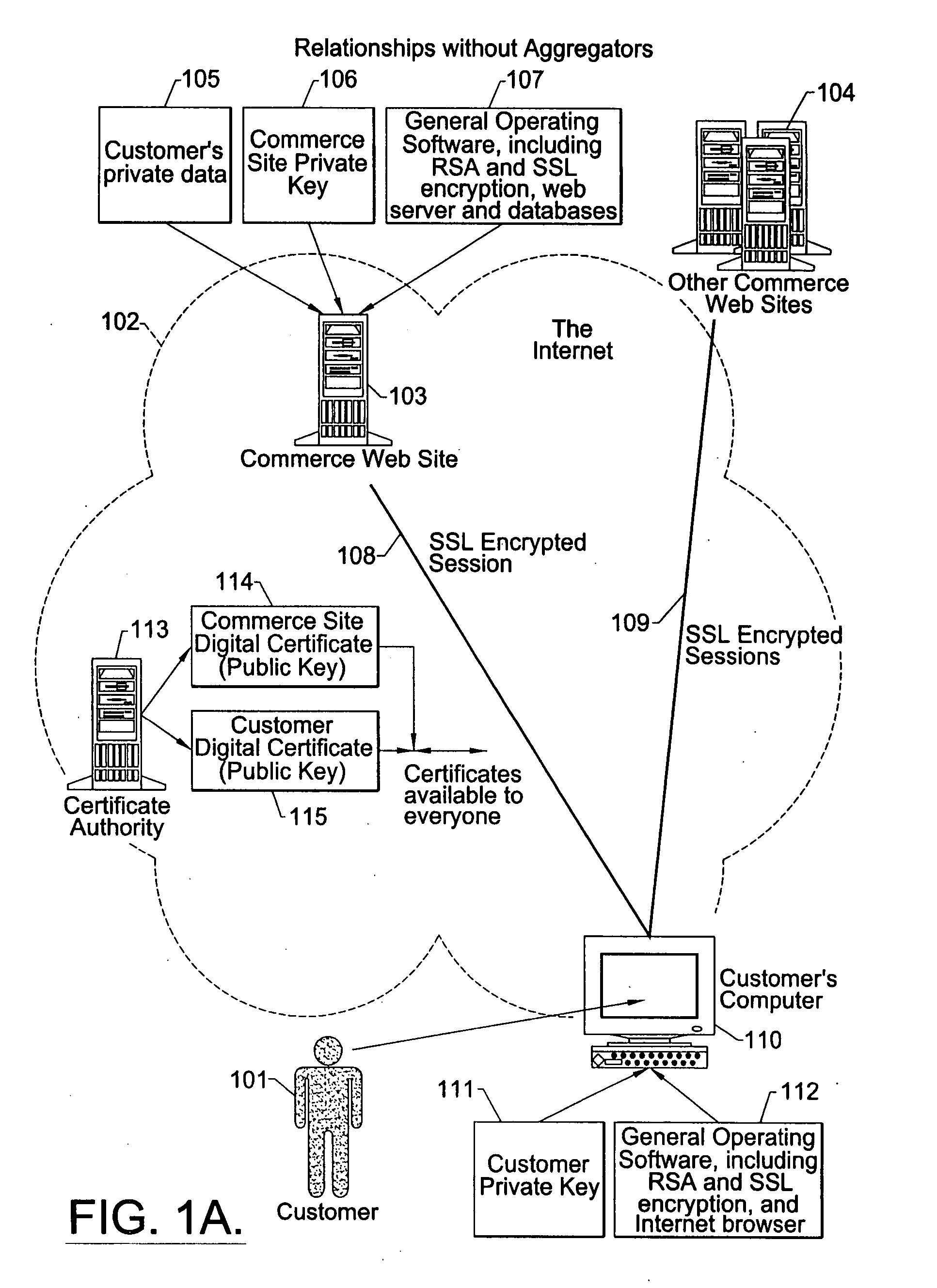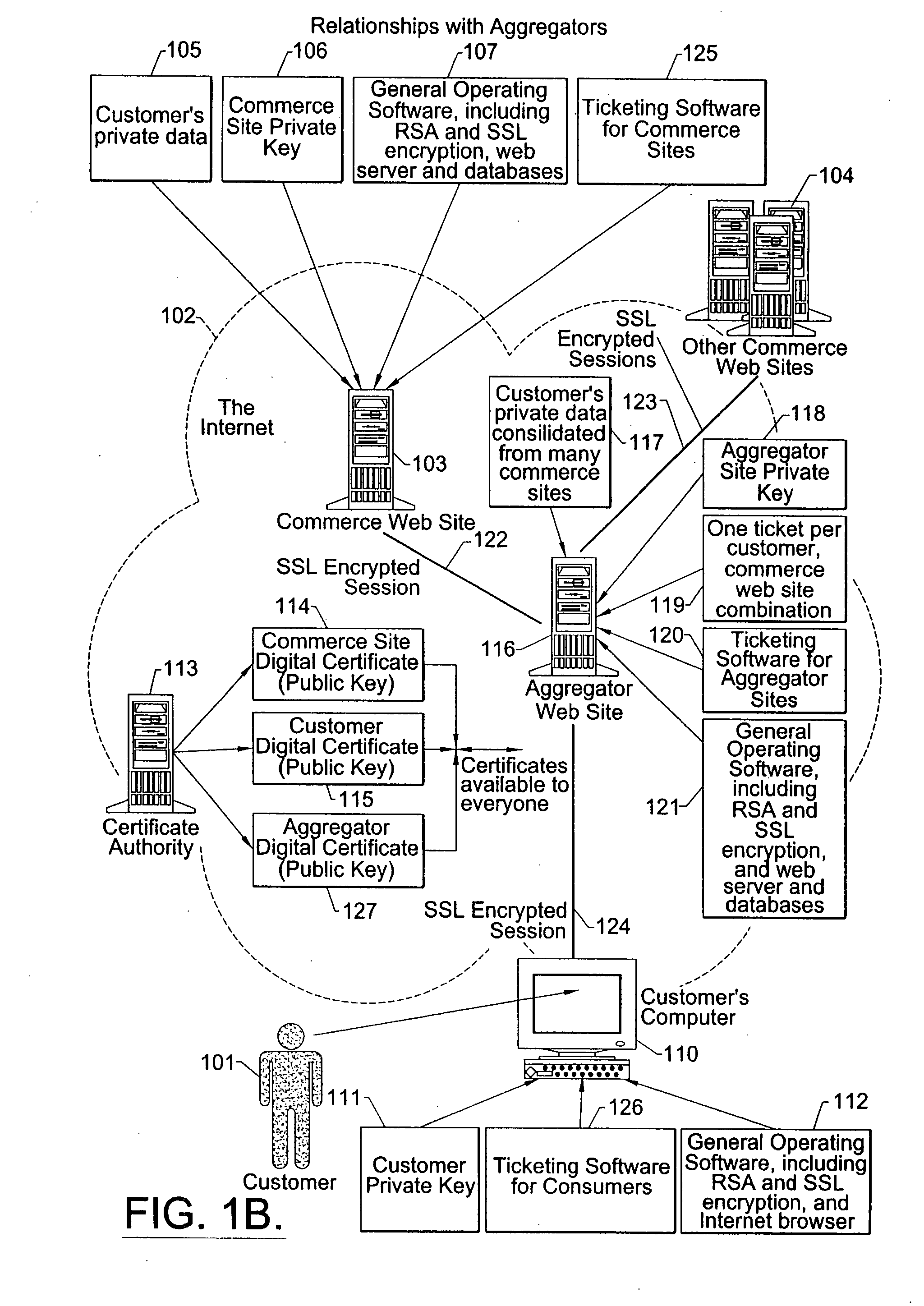Internet third-party authentication using electronic tickets
a technology of electronic tickets and third-party authentication, applied in the field of computer information security and the internet, can solve the problems of affecting the security of the password, the difficulty of taking advantage of the system, and the difficulty of obtaining a consolidated view of the internet or on-line account of the customer, so as to reduce the likelihood of password theft, prevent password theft, and reduce the security and safety of the password
- Summary
- Abstract
- Description
- Claims
- Application Information
AI Technical Summary
Benefits of technology
Problems solved by technology
Method used
Image
Examples
Embodiment Construction
[0046] For purposes of illustration, FIGS. 1 through 4 (taken in conjunction with the following description) illustrate merely exemplary embodiments of the invention, shown in the context of a commonly-encountered customer, aggregator and bank relationship for securely communicating a customer's personal and private banking, commerce-related information or other confidential information over the Internet. One skilled in the art will readily recognize that the present invention is equally applicable to other contexts in which confidential information is securely communicated among three or more parties, and even those using communication media other than the Internet.
[0047] As illustrated in FIG. 1A, commerce web sites 103, 104 provide customers 101 access to customer private or confidential data 105 using the Internet 102, standard operating software 107, 112 and computers 103, 110. Although FIG. 1A only shows one instance of customer private data 105, it is not uncommon for a cust...
PUM
 Login to View More
Login to View More Abstract
Description
Claims
Application Information
 Login to View More
Login to View More - R&D
- Intellectual Property
- Life Sciences
- Materials
- Tech Scout
- Unparalleled Data Quality
- Higher Quality Content
- 60% Fewer Hallucinations
Browse by: Latest US Patents, China's latest patents, Technical Efficacy Thesaurus, Application Domain, Technology Topic, Popular Technical Reports.
© 2025 PatSnap. All rights reserved.Legal|Privacy policy|Modern Slavery Act Transparency Statement|Sitemap|About US| Contact US: help@patsnap.com



